
 TECHSPEC® ブランドの製品は、エドモンド・オプティクスによってデザイン、規格化、あるいは製造されます。もっと詳しく
TECHSPEC® ブランドの製品は、エドモンド・オプティクスによってデザイン、規格化、あるいは製造されます。もっと詳しく
TECHSPEC® 平凹レンズ (YAG-BBAR マルチコート) は、レンズが負の焦点距離をもつようにして、平行な入射光線を曲げてレンズの出射面側から発散するようにデザインされています。本レンズは、その負の球面収差から、システム内の他のレンズによって生じる収差のバランスをとるのに用いることができます。平凹レンズは、画像の縮小、ビームの拡大、望遠鏡をはじめとする様々なアプリケーションに共通して用いられます。TECHSPEC 平凹レンズ (YAG-BBAR マルチコート) は、532nmと1064nmの一般的なNd:YAGレーザー波長で0.25%未満の反射率を実現します。本レンズは、未コート, VIS-EXT, MgF2, VIS 0°, VIS-NIR, NIR I, あるいは NIR II のARコーティングオプションもラインナップします。
| N-BK7 | |
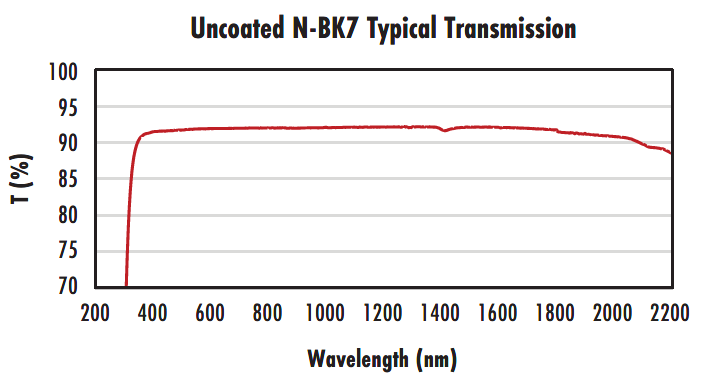 |
3mm厚の未コートN-BK7 ウインドウのUV-NIRスペクトルでの典型透過率 |
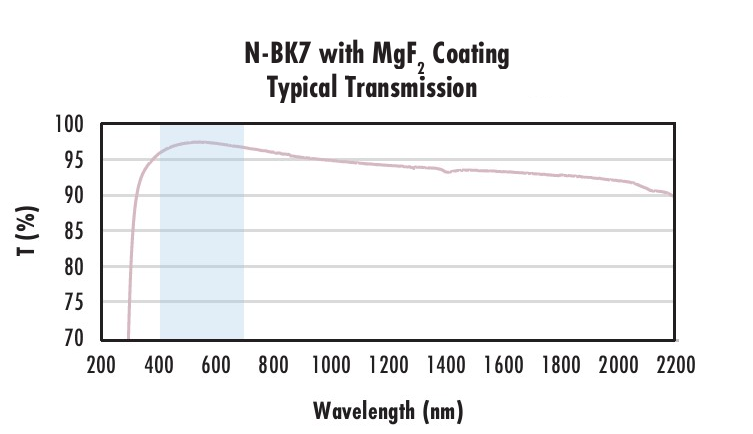 |
3mm厚のMgF2 (400-700nm) コーティング付きN-BK7 ウインドウの0°入射での典型透過率 青の網掛け部分はコーティングの設計波長範囲を示し、以下の仕様をもつ: Ravg ≤ 1.75% @ 400 - 700nm (N-BK7) この範囲外のデータは保証外になり、参考値扱いになります。 |
 |
3mm厚のVIS-EXT (350-700nm) コーティング付きN-BK7 ウインドウの0°入射での典型透過率 青の網掛け部分はコーティングの設計波長範囲を示し、以下の仕様をもつ: Ravg ≤ 0.5% @ 350 - 700nm この範囲外のデータは保証外になり、参考値扱いになります。 |
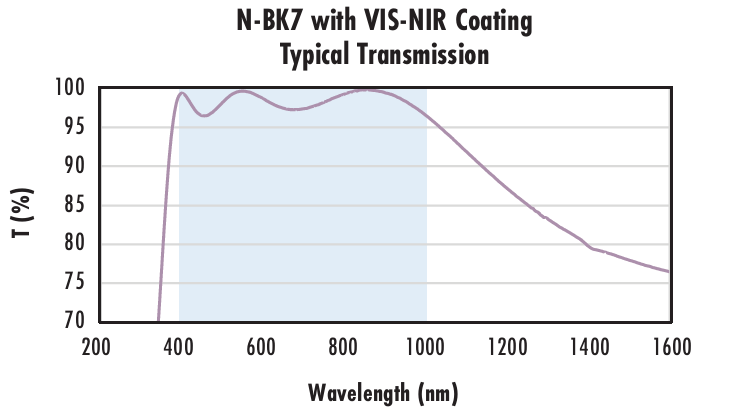 |
3mm厚のVIS-NIR (400-1000nm) コーティング付きN-BK7 ウインドウの0°入射での典型透過率 青の網掛け部分はコーティングの設計波長範囲を示し、以下の仕様をもつ: Rabs ≤ 0.25% @ 880nm この範囲外のデータは保証外になり、参考値扱いになります。 |
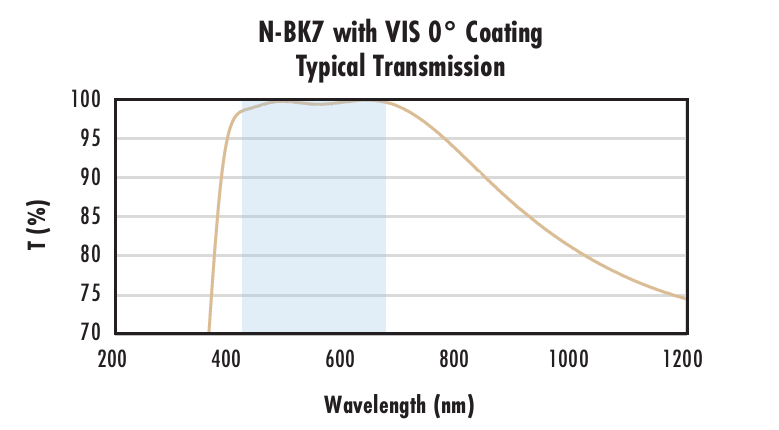 |
3mm厚のVIS 0°(425 - 675nm) コーティング付きN-BK7 ウインドウの0°入射での典型透過率 青の網掛け部分はコーティングの設計波長範囲を示し、以下の仕様をもつ: Ravg ≤ 0.4% @ 425 - 675nm この範囲外のデータは保証外になり、参考値扱いになります。 |
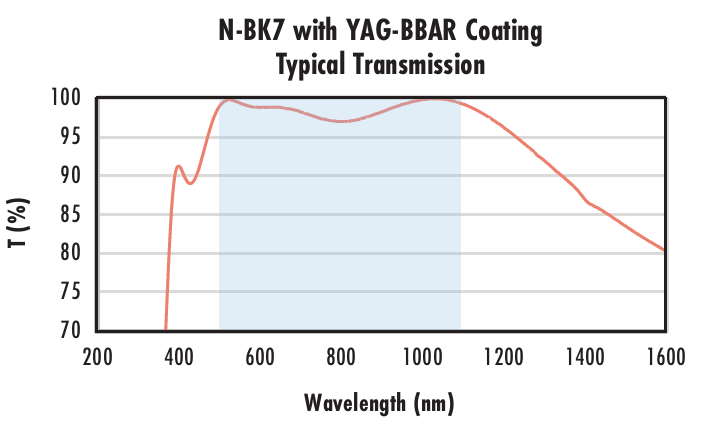 |
3mm厚のYAG-BBAR (500-1100nm) コーティング付きN-BK7 ウインドウの0°入射での典型透過率 青の網掛け部分はコーティングの設計波長範囲を示し、以下の仕様をもつ: Rabs ≤ 0.25% @ 532nm この範囲外のデータは保証外になり、参考値扱いになります。 |
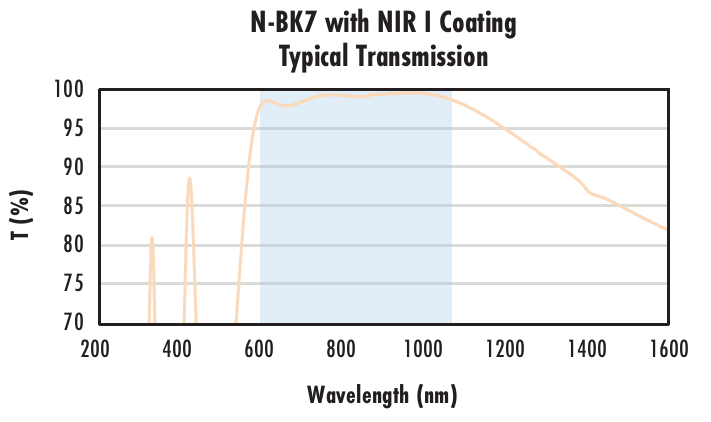 |
3mm厚のNIR I (600 - 1050nm) コーティング付きN-BK7 ウインドウの0°入射での典型透過率 青の網掛け部分はコーティングの設計波長範囲を示し、以下の仕様をもつ: Ravg ≤ 0.5% @ 600 - 1050nm この範囲外のデータは保証外になり、参考値扱いになります。 |
 |
3mm厚のNIR II (750 - 1550nm) コーティング付きN-BK7 ウインドウの0°入射での典型透過率 青の網掛け部分はコーティングの設計波長範囲を示し、以下の仕様をもつ: Rabs ≤ 1.5% @ 750 - 800nm この範囲外のデータは保証外になり、参考値扱いになります。 |
1-800-363-1992
もしくは 現地オフィス一覧をご覧ください
クイック見積りツール
商品コードを入力して開始しましょう
Copyright 2025, エドモンド・オプティクス・ジャパン株式会社
[東京オフィス] 〒113-0021 東京都文京区本駒込2-29-24 パシフィックスクエア千石 4F
[秋田工場] 〒012-0801 秋田県湯沢市岩崎字壇ノ上3番地